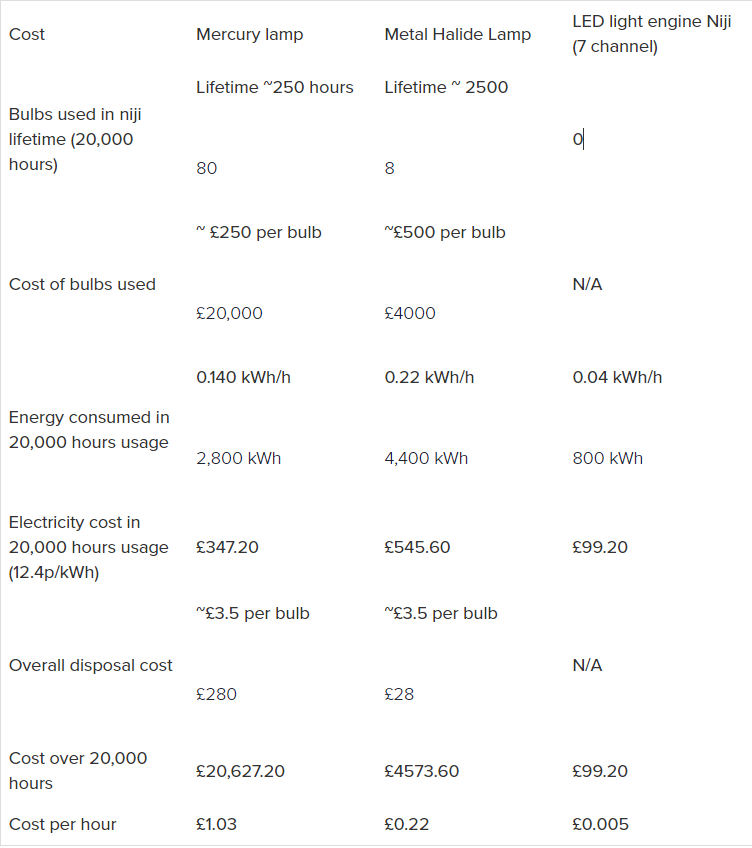Get answers for the most common questions we get asked about the niji.
1. Is the niji a quality instrument?
Yes! The niji is designed and built in the UK using quality materials and local manufacturing where suitable.
2. Will the niji have enough optical power for me?
The niji has been design for good levels of optical power that are more than sufficient for most research where a quality camera is used. In our research, customers preferred to use a better camera and reduce their photo toxicity rather than bleaching the sample with very high power light. The money saved buying a niji can be put towards a higher performance camera or better filters!
3. Is the niji noisy?
No! We hate noise in the lab! It’s wearing and distracting. We’ve design the niji to be nice and quiet.
4. How do I optimise the light delivered to my sample?
This question crops up a lot in florescence microscopy. There are a few things to check and optimise for best performance.
Firstly, please check your fluorescence filters, these need to match the excitation wavelength supplied by the niji. Most commonly this happens with the UV (DAPI) channel where older 365nm filters are used, whereas the niji delivers more modern 390nm excitation light.
Secondly, check the filters are not burnt out. Older filters age, especially soft coated filter when used with a mercury or metal halide lamp. A nice new set of tuned filters will give you an enormous improvement in your image quality. The savings you make buying a niji will pay for some nice new filters!
If you are using the Bluebox Optics universal collimator, make sure it’s set correctly for your microscope. All the major manufacturers use different optics and need different settings for the collimator. Tune the lens nearest to the light guide first and then the lens nearest the microscope.”
Finally check your light guide. Liquid light guides have a limited life, especially when used with high power mercury lamps. The heat and broad wavelength output damages them over time. You may need to replace the light guide if you have an old one.
5. What is the lifetime of the LEDs?
The niji is built with quality LEDs from major manufacturers which are easily run within their limits. As an example Lumileds give a 0.5% failure rate after 20,000 hours. Since the LEDs in the niji are only run for very short periods, the theory says they will last virtually indefinitely!. So far we’ve had no LED failures. The good news is, if we do have a failure, the module can be simple switched out in the field without returning the niji so you can keep using the other colours and be up and running in no time.
6. What software can I use the niji with?
The niji comes with it’s own GUI which can be run on a PC or tablet locally to the device. We also have native Mircomanager drivers and a Metamorph .dll which can be loaded in as a 3rd party device. The niji has a compatible mode allowing it to run with Elements, Cellsens, LAS X, HC Image and many more. Please contact us for more information.
7. Can I use the niji with my TTL triggering system?
The niji can be programmed to work with every possible TTL triggering combination we can think of so yes!
8. You claim to be low energy, environmentally friendly and save lifetime cost compared to lamps. Can you show this?
We’ve made some rough calculations to show the approximate through life cost based comparison based on current costs at the time of writing this FAQ. Add these to the purchase price of the system and you can soon see that not only does the niji remove dangerous toxins (Mercury) from the lab, allow your facility to contribute towards a carbon reduction plan for the research institute but you also save money!

9. Since the niji is so Green, can I get money from my sustainability department?
It’s in all our interests to take care of our world. Many institutions have targets for carbon reduction and budgets to help them achieve this. By switching from Power hungry lamps to efficient LED illumination for the microscopes in your lab, your department can achieve a “quick win”. Check with your sustainability department to see if there is a budget available.
10. What else are Blue Box Optics doing to be environmentally friendly?
BBO tried hard to make the niji as environmentally friendly as they can, their components are sourced relatively locally where they can, manufacturing is made in the UK and they use recyclable packaging as much as possible.
11. Channel colour names
The niji names it’s channel by the excitation colour emitted by the source, rather than the emission colour given by the fluorophore. This may not be what you’re used to!
Other Blogs/Articles that may be of interest:































